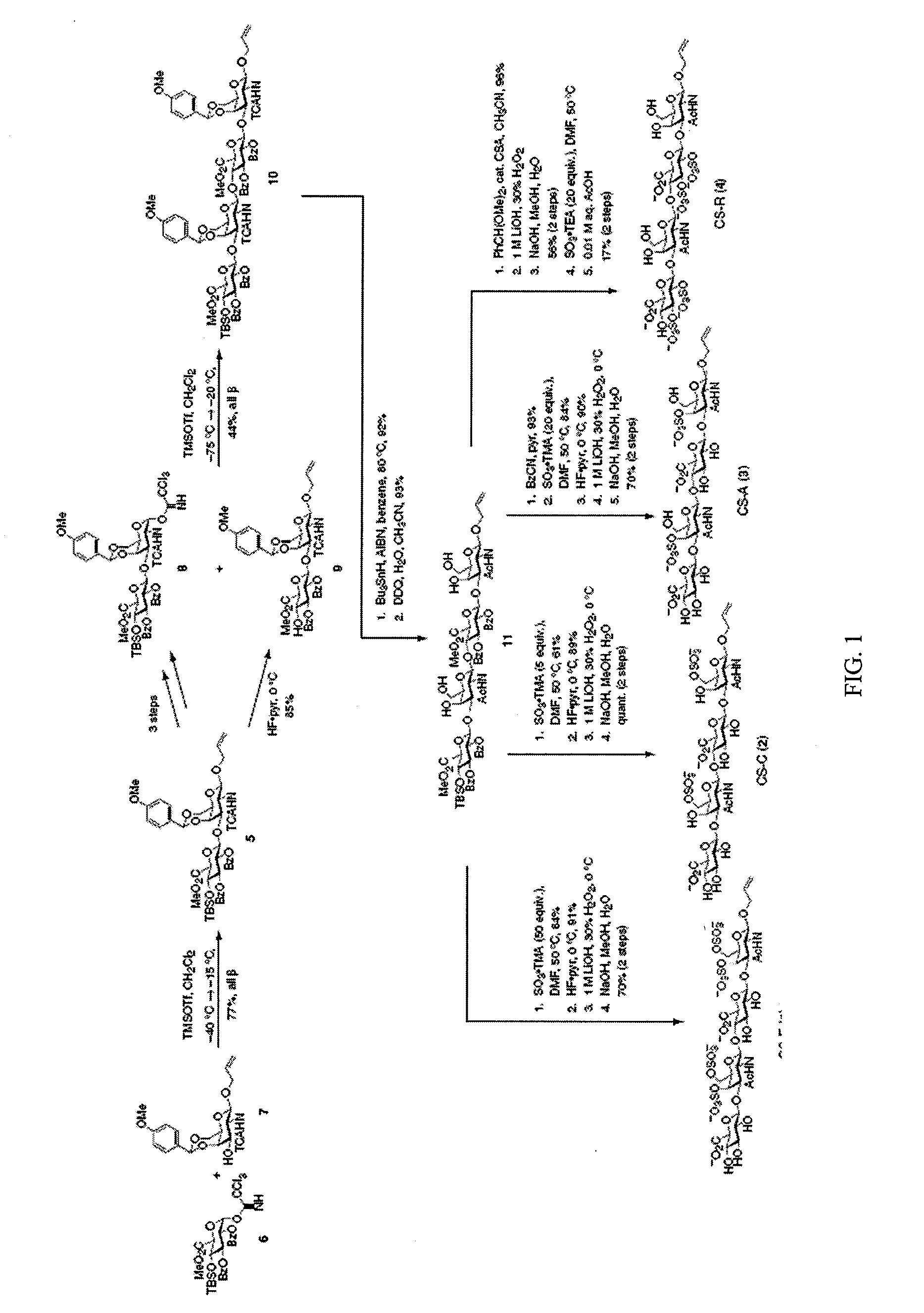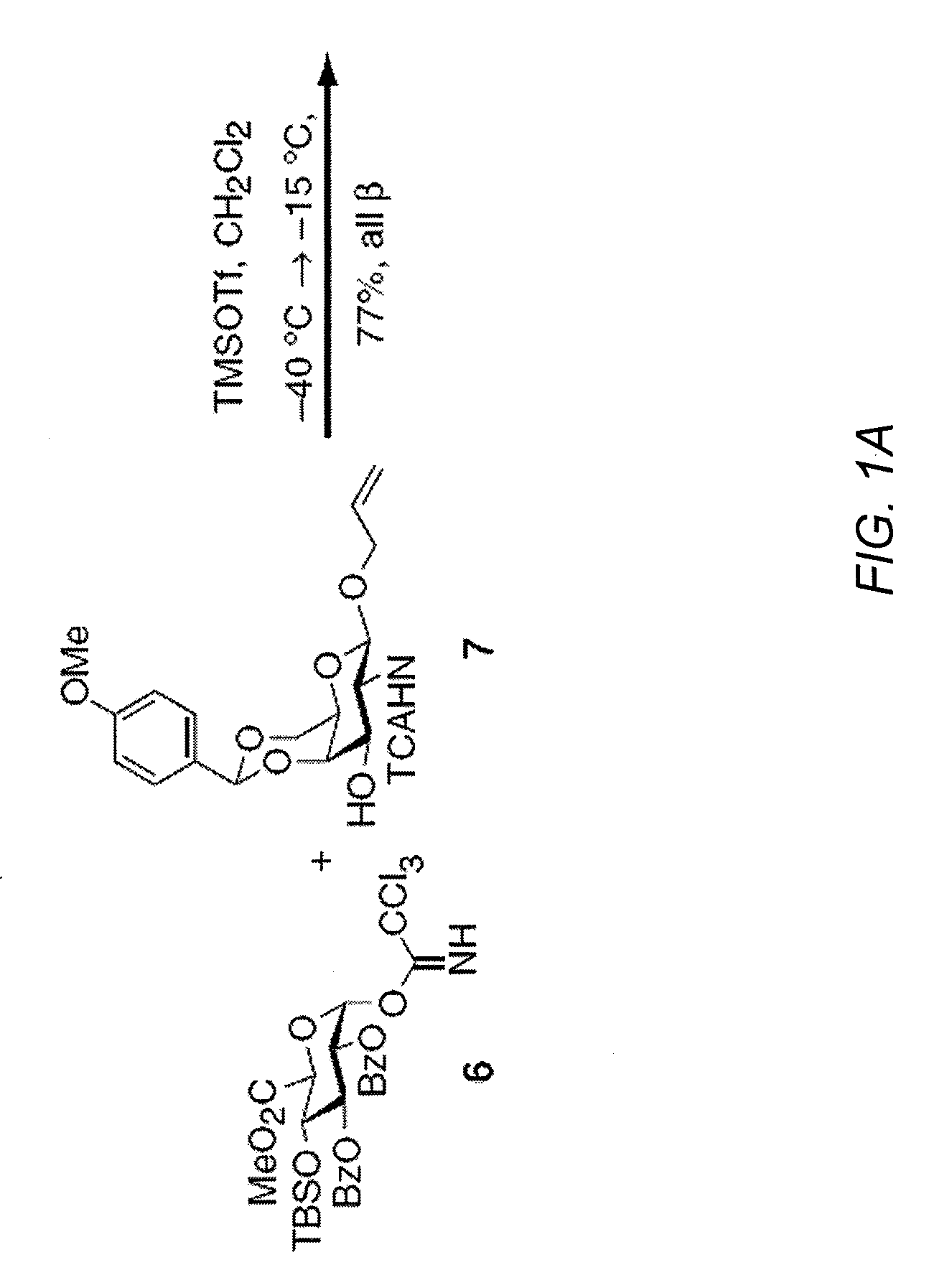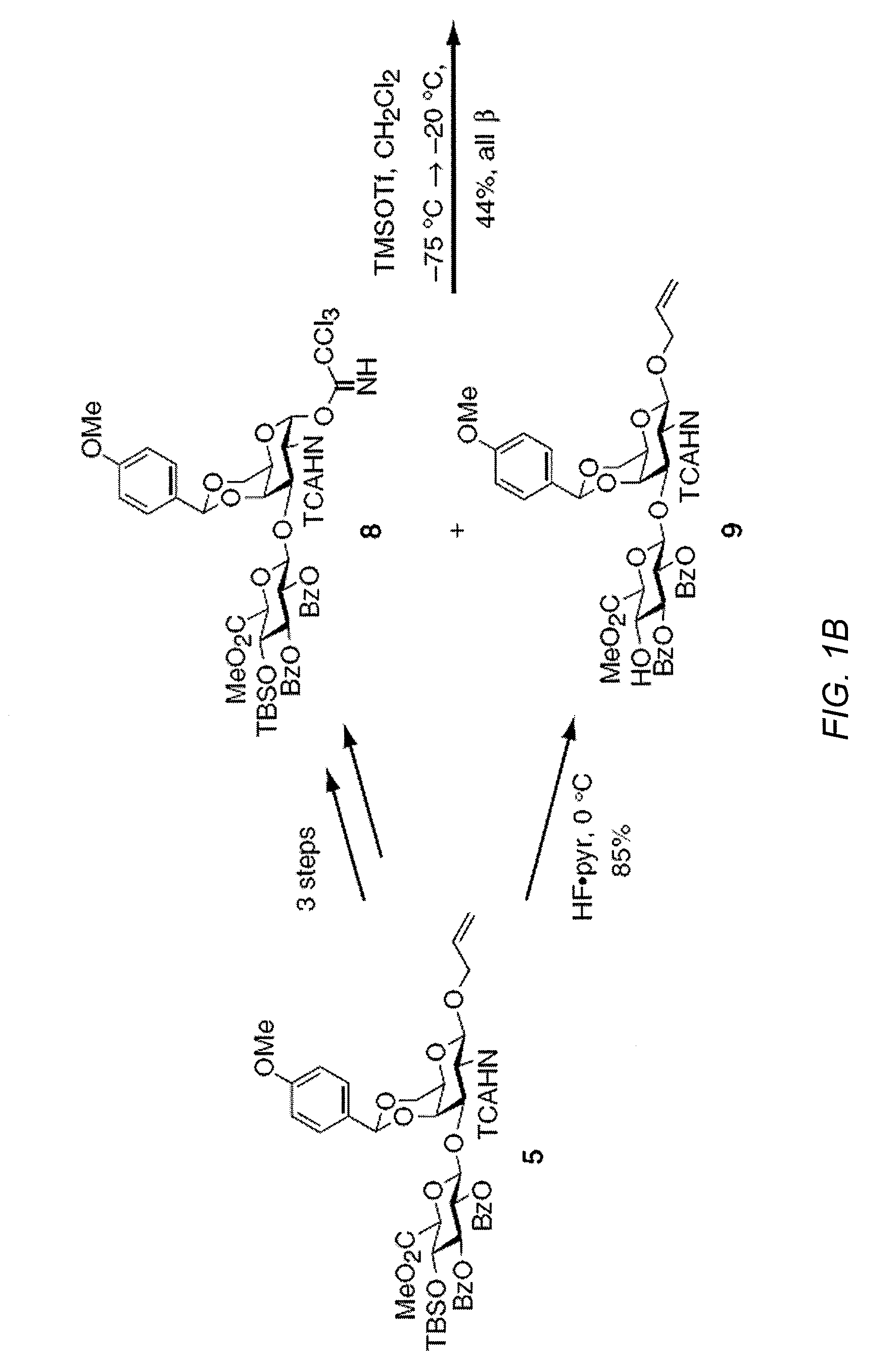Chondroitin sulfate binding proteins and modulators thereof
a technology of chondroitin sulfate and binding proteins, which is applied in the field of chondroitin sulfate and chondroitin sulfate binding proteins, can solve the problems of not being able to quickly identify cs-binding proteins or specific sulfation motifs involved in protein recognition
- Summary
- Abstract
- Description
- Claims
- Application Information
AI Technical Summary
Benefits of technology
Problems solved by technology
Method used
Image
Examples
example 1
[0090] This example illustrates the identification of novel CS-binding proteins using a CS microarray. This example illustrates the identification of tumor necrosis factor-α (TNF-α) to chondroitin sulfate-E (CS-E)).
[0091] The CS microarrays in this example were prepared as describe above. Prior to use, the arrays were outlined with a hydrophobic pen (Super Pap Pen, Research Products International) to create a boundary for the protein treatments and rinsed three times with H2O. The slides were then blocked by treatment with NaBH4 (125 mg) in 140 mM NaCl, 2.7 mM KCl, 5.4 mM Na2HPO4, and 1.8 mM KH2PO4 (phosphate buffered saline, PBS, 50 mL) at room temperature (rt) for 5 min and washed five times for 3 min with PBS. Human TNF-α (Peprotech), FGF-1 (R&D Systems; both reconstituted to 2 μM 0.1% Triton X-100 in PBS), cell culture supernatant containing monoclonal anti-CS-A antibody, or cell culture supernatant containing monoclonal anti-CS-E antibody (both 1:1 in 0.1% Triton X-100 in PBS)...
example 2
[0093] This example illustrates the ability of polysaccharides enriched in the CS-E sulfation motif to antagonize the TNF-α interaction with the cell surface receptor TNFR1.
[0094] TNFR1 was immobilized on a microtiter plate, and binding of TNF-α to the receptor was measured in the presence of varying concentrations of the CS-E tetrasaccharide or naturally occurring CS polysaccharides. Human recombinant TNFR1 (Peprotech; 1 μg / mL in 50 mM Na2CO3, pH 9.6) was added to a 384-well NUNC Maxisorp clear plate (25 μL per well), and the plate was sealed and incubated for 12 h at 4° C. The wells were aspirated, washed four times with PBS containing 0.05% Tween-20 (PBST, 75 μL / wash), and blocked for 2 h at rt with 1% BSA in PBS (75 μL). During this time, biotinylated TNF-α (Perkin Elmer; 25 μL / well of a 1 nM solution in 0.05% Tween-20, 0.1% BSA in PBS) was pre-incubated with the indicated concentrations of polysaccharides enriched in the CS-A, CS-C, or CS-E motifs (Seikagaku; 0.1-100 μM in H2O...
example 3
[0096] This example illustrates the ability of polysaccharides enriched in the CS-E sulfation motif to inhibit TNF-α-induced cell death.
[0097] U937 cells (A TCC) sensitive to TNF-α-induced apoptosis were cultured in RPMI 1640 medium containing 10% fetal bovine serum at 37° C. and 5% CO2 / 02. Cells were grown in every other well of a 384-well NUNC sterile, clear plate (25,000 cells / well, 25 μL / well) for 18 h. Solutions of the CS-E tetrasaccharides and CS polysaccharides enriched in the CS-E sulfation motif at various concentrations (0.01-4000 μM in sterile PBS) were pre-incubated with TNF-α (1 μL / well of a 125 ng / mL solution in sterile PBS) at rt. After 2 h, the solutions were added to the cells and incubated for 18 h. At this time, caspase 3 / 7 activity was analyzed using the Apo-One homogeneous caspase 3 / 7 assay kit (Promega) according to the manufacturer's protocol. Readings were taken every 30 min for 18 h at rt on a Victor plate reader. By this time, caspase 3 / 7 activity had reac...
PUM
| Property | Measurement | Unit |
|---|---|---|
| pH | aaaaa | aaaaa |
| diameter | aaaaa | aaaaa |
| diameter | aaaaa | aaaaa |
Abstract
Description
Claims
Application Information
 Login to View More
Login to View More - R&D
- Intellectual Property
- Life Sciences
- Materials
- Tech Scout
- Unparalleled Data Quality
- Higher Quality Content
- 60% Fewer Hallucinations
Browse by: Latest US Patents, China's latest patents, Technical Efficacy Thesaurus, Application Domain, Technology Topic, Popular Technical Reports.
© 2025 PatSnap. All rights reserved.Legal|Privacy policy|Modern Slavery Act Transparency Statement|Sitemap|About US| Contact US: help@patsnap.com



